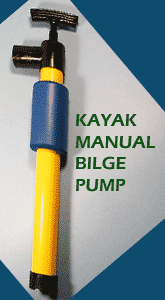|

Drifting in and out of sleep, I can feel Hapscut surging down the face of a larger wave as I lay comfortably on the shaded cabin floor enjoying a nap. I am happy with our new outdoor furniture cushions that make the plywood floor just a little more comfortable. Rosa, my wife, is at the helm enjoying the sailing during the 2012, Texas 200. The rhythmic surfing makes for a great nap with the water lapping under the bow as we head north. After 6 months of building and lots of late nights getting the boat ready, it is great to doze off in the shade of the cabin and feel the cool breeze coming down from the walk-thru slot. Jim Michalak is a smart man I think to myself as I doze back off to sleep!

The canvas stadium seating is easy on your bottom and provides a great foot rest. The rudder is offset 6" to move the rudder away from the engine and the tiller is curved to make it easier for Rosa to steer on starboard tack. The curved shape allows the tiller to miss the power head of the engine and the mizzen mast when steering the boat. |
Looking for a designer that could provide a set of plans for a boat that would meet our needs was not a hard choice. The design had to fit a meager budget, fit in my garage, would be easy to build within 6 months, perform well for me and be comfortable for my wife. Along the Texas Gulf coast and many other places I saw Jim Michalak's designs perform well. It was also Jim's sense of humor in his design brief of Hapscut that caught my attention. Any boat that avoided mud was going to be a good boat, especially for my wife. We ordered the prototype plans from Duckworks and starting building the first Hapscut.

Hapscut following us in the rear view mirror of the mini-van on the way to its first sail. The front and rear walk-thru hatches are 3/8" clear Plexiglas that allows you to see thru the boat when it's on the trailer. For sailing in rough weather we slide in the front hatch and snap on a short slot cover that goes from the mast forward to the front hatch. This keeps the spray from getting inside the boat. |
We started construction on Dec 19, 2011 using marine grade plywood and fir for all the timbers, masts, spars and a few left over pieces of western red cedar from another build for a few "pretty" details. We launched on May 19, 2012 without much fanfare. Well, at least it started out that way. John Votaw and his family came over, Chuck Pierce drove over from Beaumont, Gordo Barcombe with some of his family and Chris and Cathy brought their Caprice and launched just before me. I was pretty nervous about launching the boat, but by the time I parked the trailer she was safely tied up to the dock by this great group of sailors. There she floated for the first time. I was very happy and boy those colors are bright!

John V helps launch Hapscut for the first time and checks for leaks. No leaks were found! |
The build was straight forward and Jim's book, Boatbuilding For Beginners was helpful in understanding a few of the assembly steps and details. We built a scale model out of heavy paper to better understand the design, construction details and assembly sequence. During the construction of the model is when we decided to add the engine well which was not in the original plans. Jim has since added the engine to the design drawings. Rosa and I also used the model to try out different color schemes for the boat as well. I will bypass the details of building Hapscut and save that for another article, but will mention a few things. With the online forums I got plenty of help and it sure was nice to have a few sailors that had already built Michalak designs drop by and offer some on-site advice. Our biggest challenge was moving and rolling the hull during construction. We had one accident that scared and bruised Rosa when we lost control of the hull while rolling it over. After that we started to enlist the neighborhood teenagers to help move the boat after that. Six strong teenagers could carry the hull and roll it without difficulty.

We added an additional 18" for a good sized engine well. It's great for storing a 3 gallon fuel tank and wet stuff. The swoop shape on the rudder head is a handle for carrying the weighted rudder assembly. |

Construction starts by building the hull right side up and then roll it over to put the bottom on. The leeboard guards pictured are mock-ups to create patterns before making the final design. |
The boat is easily carrying us along with a week's worth of food, clothing, ice chest, 10 gallons of water, sailing gear, tool box, cockpit canopy, 5 HP outboard motor, 3 gallons of fuel, porta-a-potti and our sun shower. Hapscut is sailing well as I nap, Rosa yells down to me, 9.2 MPH! That wakes me up, so I prepare lunch as Rosa surfs another wave, 9.8 MPH! She says with a grin. Not bad I think looking up at our homebuilt sail with its #3 reef.

This is the balanced lug rig with the #3 reef tied in and halyard attached at the correct location on the yard. Sails are homebuilt from a Poly Sail International kit. |
To be continued...
|













